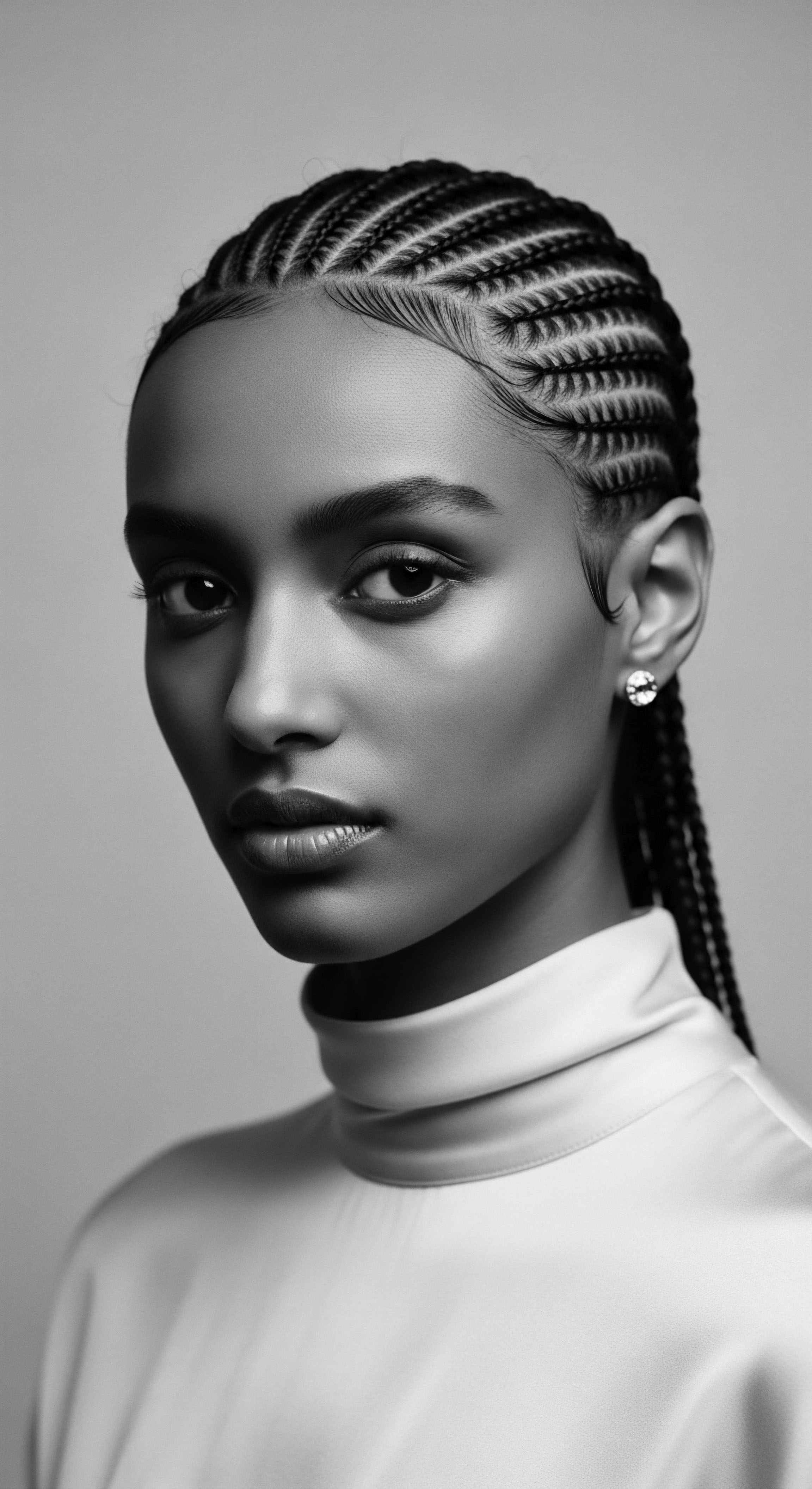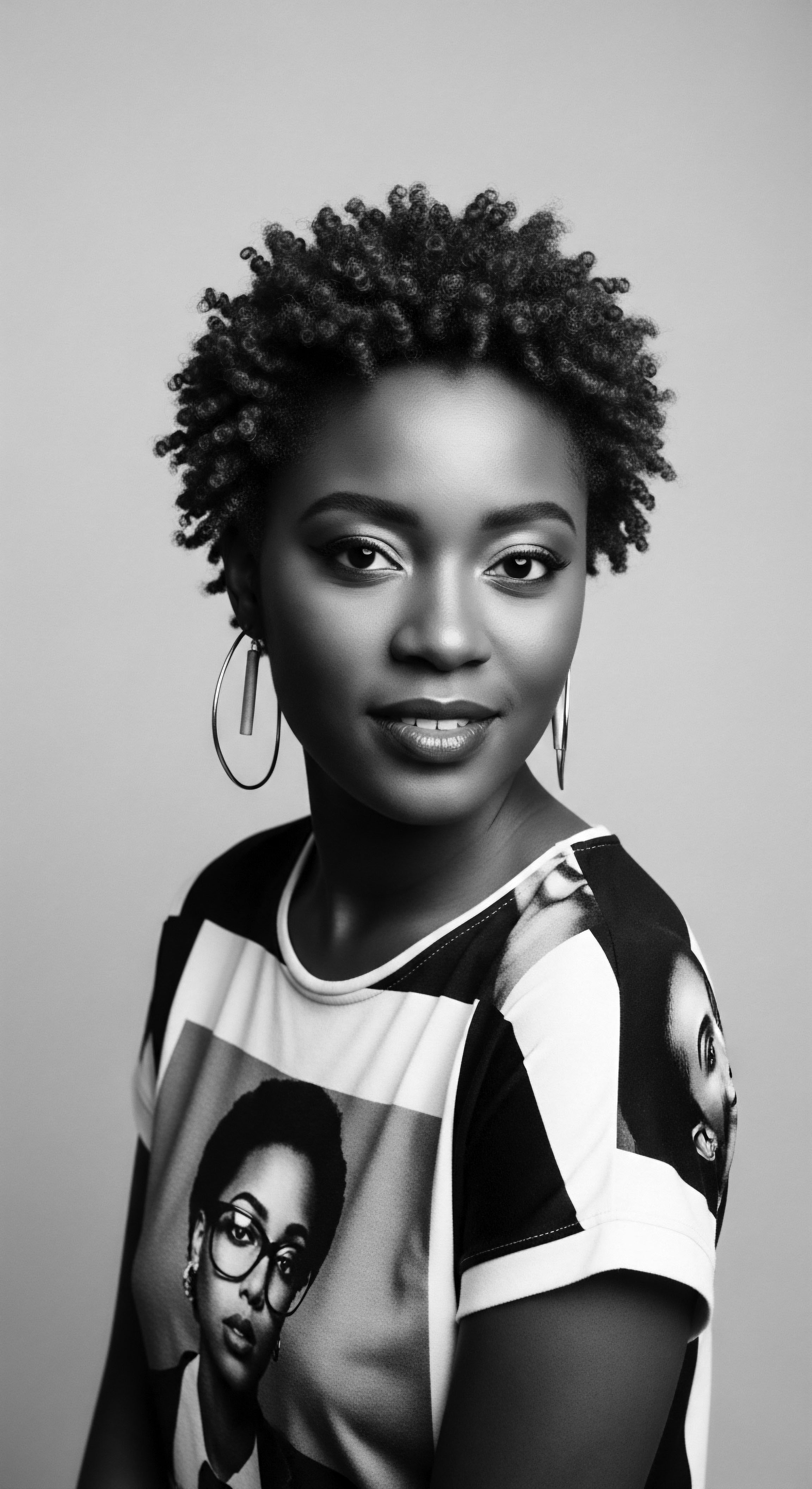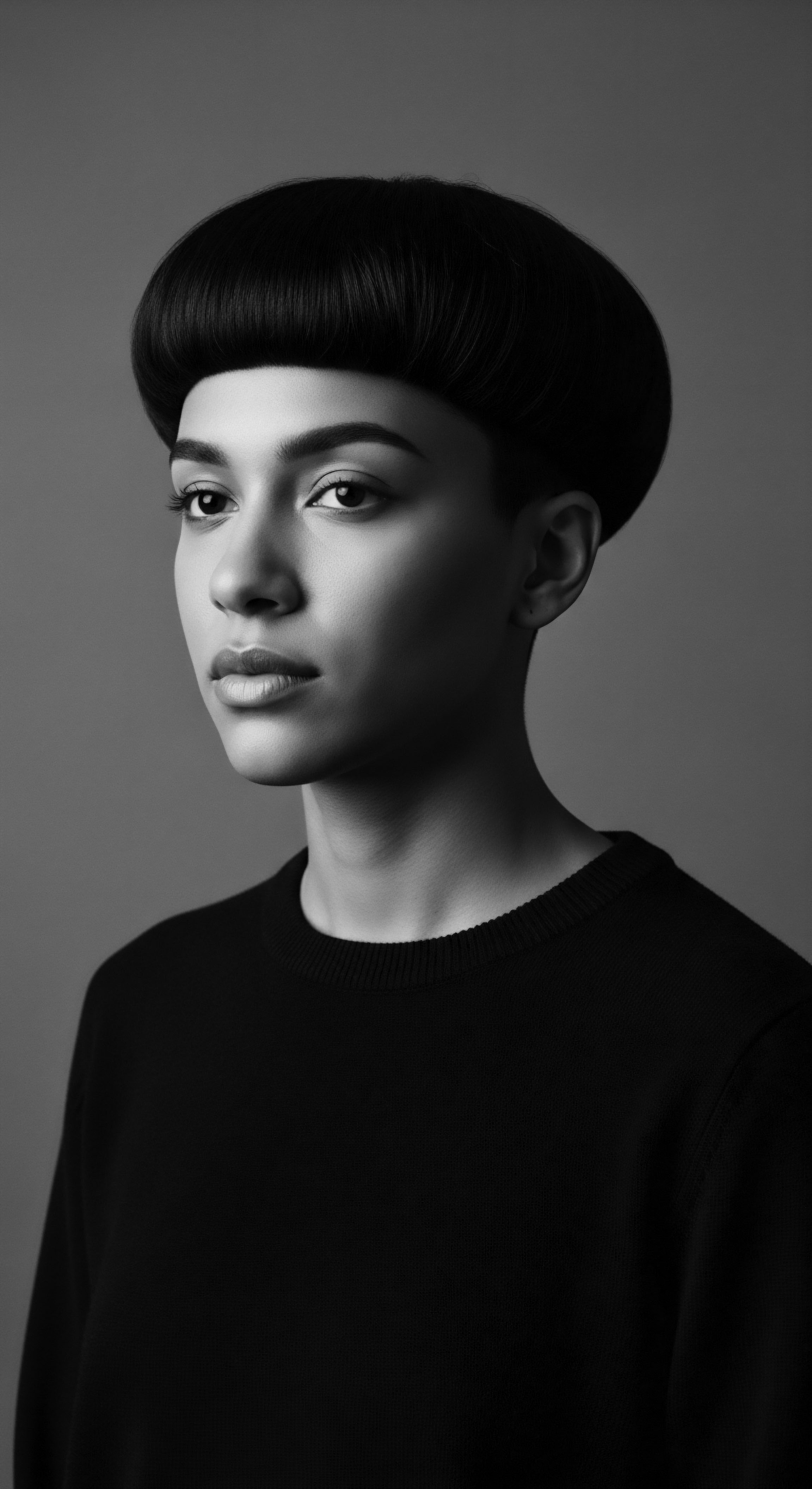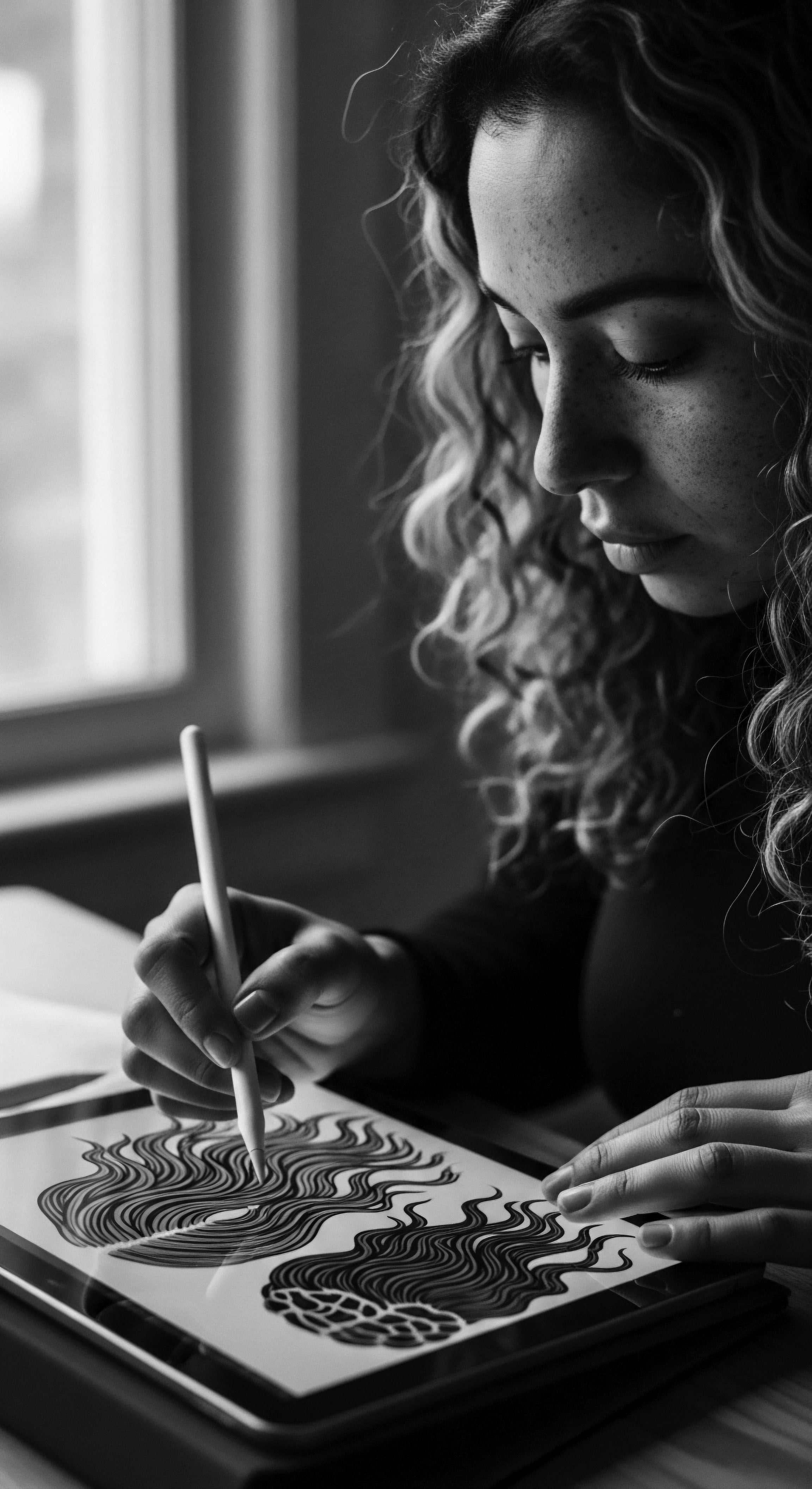
Roots
The coil and kink, the wave and curl of textured hair, hold within their very structure the echoes of ancestral wisdom. This heritage, deeply etched into the genetic memory of Black and mixed-race communities, speaks not only of resilience but also of an intimate, profound relationship with the living world. Long before the advent of synthesized compounds, before the global marketplace offered an array of specialized hair care products, our forebears found solace, sustenance, and remarkable efficacy for their crowning glory in the embrace of botanical resources. The story of textured hair is, at its heart, a narrative rooted in the earth, a testament to generations who intuitively understood the pharmacopoeia of the natural world.

How Did Ancestral Understanding of Hair Structure Influence Botanical Choices?
Consider the intricate biology of textured hair, its unique elliptical shape, the varied distribution of melanin, and the particular way it draws moisture from the air. These characteristics, often celebrated in contemporary discourse, were implicitly understood by ancient practitioners through observation and generational trial. They knew, for instance, that coiled strands possessed a distinct porosity, prone to dryness, and would seek out botanical allies that offered deep hydration and emollients. The knowledge wasn’t codified in academic journals, rather it was a lived science, passed down through touch, demonstration, and oral tradition.
For example, the use of shea butter (from the Vitellaria paradoxa tree) across West Africa for centuries was not merely for its moisturizing properties; it was understood as a sealant, forming a protective layer that shielded delicate strands from harsh environmental elements, reflecting an understanding of hair’s vulnerable outer cuticle. This practice, documented in various ethnographic studies, points to an ancient wisdom that mirrored modern hair science’s understanding of lipid layers and moisture retention (Kagbo & Aremu, 2017).
The historical engagement with botanical resources for textured hair care represents a vibrant living archive of ancestral wisdom and intuitive ethnobotany.
The very act of applying these botanicals became a ritual, a connection to the land and to a lineage of care. They learned which plants offered slip for detangling, which brought shine, and which soothed an irritated scalp. The meticulous process of preparing these ingredients, from grinding seeds to infusing oils, speaks to an artisanal skill that honored the plant’s inherent power and translated it into tangible benefits for the hair. This foundational knowledge, born from necessity and refined by generations, built a system of hair care that was self-sufficient, sustainable, and deeply resonant with cultural identity.

What Foundational Botanical Compounds Supported Scalp Vitality?
The health of the scalp was always paramount, recognized as the soil from which the strands grew. Ancient practices often prioritized remedies that addressed scalp irritations, flaking, or excessive oiliness. The botanicals employed for this purpose were often those with recognized anti-inflammatory, antimicrobial, or cleansing properties.
- Aloe Vera ❉ Across various African and Caribbean cultures, the succulent gel of the aloe plant (Aloe barbadensis miller) served as a profound soothing agent for the scalp, addressing itchiness and inflammation. Its mild cleansing properties also meant it could be used as a gentle wash.
- Neem ❉ Originating from the Indian subcontinent and adopted in parts of Africa through ancient trade routes, neem (Azadirachta indica) was highly valued for its potent antifungal and antibacterial qualities, making it a powerful ally against scalp conditions like dandruff and fungal infections.
- Clay ❉ While not strictly a botanical, various natural clays (such as rhassoul clay from Morocco) were often blended with plant infusions. These mineral-rich earths helped detoxify the scalp, absorb excess oil, and gently cleanse without stripping the hair’s natural oils.
- Black Soap ❉ Traditionally made from the ash of plantain peels, cocoa pods, and shea tree bark, this soap offered a powerful yet conditioning cleanse for both hair and skin, demonstrating an early understanding of pH balance and natural surfactants.
These practices weren’t just about hygiene; they were about maintaining a healthy energetic flow, ensuring the hair could thrive as a symbol of vitality and connection. The meticulous preparation of these remedies, often a communal activity, wove the act of hair care into the broader fabric of community life, celebrating the shared legacy of resourcefulness.

Ritual
The styling of textured hair has always transcended mere aesthetics. It is a profound act of expression, a language of identity, and a conduit for cultural narratives. From the intricate braids of ancient African kingdoms to the sculpted afros of the civil rights era, each style speaks volumes about heritage, status, and self-possession. The genesis of these elaborate and often enduring practices often traces back to the ingenious application of botanical resources, transforming raw plant matter into tools and treatments that enabled unparalleled artistry.

What Plant-Based Ingredients Were Essential for Protective Styles?
Protective styles, a cornerstone of textured hair care, have deep historical roots. These styles, such as braids, twists, and cornrows, aim to shield delicate hair strands from environmental damage and manipulation, thereby promoting length retention and overall hair health. The success and longevity of these styles were, in many ways, reliant upon the botanical elements used to prepare, hold, and maintain them. Plant extracts offered both the structural support and the nourishing elements required.
One might consider the use of okra gel in some West African traditions, or mucilaginous extracts from plants like flaxseed or slippery elm in the diaspora, often infused into water to create a natural, slippery detangler and styling aid. These gels provided ‘slip,’ reducing friction during braiding and twisting, minimizing breakage, and ensuring a smoother, more defined finish. They also contributed to the hair’s pliability, making intricate patterns easier to achieve without excessive tension.
The sticky sap or resin from certain trees, judiciously applied, could act as a precursor to modern styling gels, offering a gentle hold that maintained the integrity of complex styles for extended periods. This resourcefulness ensured that hair, even in challenging climates or under conditions of duress, could be styled and protected with dignity.
| Traditional Botanical Aid Hibiscus Leaf Mucilage |
| Ancestral Purpose in Styling Provided 'slip' for detangling and offered a conditioning sheen for braids and twists. |
| Modern Parallel/Scientific Link Natural detanglers, plant-based conditioning agents; rich in antioxidants. |
| Traditional Botanical Aid Shea Butter/Cocoa Butter |
| Ancestral Purpose in Styling Sealant for moisture, imparted shine, and aided in smoothing flyaways during styling. |
| Modern Parallel/Scientific Link Emollients, humectants; fatty acids that coat the hair shaft, reducing frizz. |
| Traditional Botanical Aid Plant Resins/Gums |
| Ancestral Purpose in Styling Used for subtle hold in elaborate coiffures and as a binding agent for extensions. |
| Modern Parallel/Scientific Link Natural polymers, light-hold gels; provide flexible structure without stiffness. |
| Traditional Botanical Aid Henna/Indigo Paste |
| Ancestral Purpose in Styling Coloration for ceremonial styles, but also provided strengthening and conditioning. |
| Modern Parallel/Scientific Link Natural hair dyes, protein treatments; lawsone (henna) binds to keratin, strengthening strands. |
| Traditional Botanical Aid These botanical staples reveal a continuous legacy of natural solutions for hair care and artistry within textured hair traditions. |

How Did Communal Styling Rituals Incorporate Botanical Elements?
Hair styling, especially in pre-colonial African societies, was often a communal affair, a space for storytelling, bonding, and the transmission of knowledge. The botanicals were not just ingredients; they were participants in these rituals, their scents mingling with laughter and conversation. The application of oils derived from palm kernel or argan , for instance, became a moment of tender care, a connection between generations as daughters learned from mothers and grandmothers.
These oils, prized for their nourishing fatty acids, were generously applied before and after styling, ensuring the hair remained supple and less prone to breakage. The communal aspect deepened the experience, transforming a practical need into a shared cultural practice.
The integration of botanicals into historical styling rituals underscored hair care as an communal act of heritage preservation and artistic expression.
Tools, too, often drew their essence from the plant world. Combs carved from wood, adornments woven from grasses or fibers, and hair extensions crafted from plant materials (like raffia) or even processed plant fibers, all speak to an unbroken lineage connecting human ingenuity with the abundance of nature. The ancestral hairstylist, a master of both technique and botanical lore, understood how to manipulate these elements to create structures that were both aesthetically powerful and structurally sound, preserving the heritage of styles through material connection.

Relay
The wisdom encoded within historical textured hair practices extends far beyond daily grooming. It represents a sophisticated, holistic framework for well-being, where the care of one’s crown was intrinsically linked to spiritual health, communal identity, and the very rhythms of life. The botanical realm served as the primary pharmacy for this integrated approach, providing remedies for common hair ailments and fortifying the hair against the rigors of existence. This enduring understanding, passed from generation to generation, forms a living legacy, a relay of knowledge that continues to inform contemporary care.

How Did Ancestral Traditions Address Hair Challenges With Botanical Solutions?
Textured hair, with its unique architectural complexity, can present specific challenges such as dryness, breakage, and scalp irritation. Ancestral practitioners, without the benefit of modern scientific equipment, observed these issues keenly and developed targeted botanical interventions. For instance, the pervasive issue of dryness was met with emollients and humectants sourced directly from nature.
Baobab oil (from the Adansonia digitata tree), revered across various African cultures, was prized for its rich fatty acid profile and ability to penetrate and nourish dry strands, helping to restore elasticity and suppleness. Similarly, marula oil from Southern Africa offered deep conditioning, preventing the brittleness that often leads to breakage.
Beyond simple conditioning, serious hair and scalp conditions were also addressed. For instance, in some West African communities, the bark of the Anogeissus leiocarpus tree was used to create a decoction known for its antiseptic and anti-inflammatory properties, applied to soothe severe scalp infections or to address significant hair loss (Sofowora, 1982, p. 115).
This demonstrates a deep empirical knowledge of medicinal plants and their efficacy, developed through generations of meticulous observation and application. The treatment was not isolated to the hair itself; often, a corresponding internal botanical remedy or dietary adjustment would accompany the external application, signifying a truly holistic perspective on wellness.
- Chebe Powder ❉ Hailing from Chad, this blend of specific botanicals (like Croton gratissimus seeds, cloves, and ‘Mahalaba’ fruit) is historically used by Basara women for hair strength and length retention, often applied as a paste or oil infusion.
- Rosemary ❉ While common in European herbalism, its stimulating and clarifying properties were also recognized and used in various forms (infusions, oils) across diverse cultures to promote scalp circulation and counter hair thinning.
- Brahmi ❉ In Ayurvedic tradition, this herb (Bacopa monnieri) is highly valued for its hair growth-promoting properties, used in oil infusions to strengthen roots and improve overall hair health.
- Fenugreek ❉ Seeds of this plant (Trigonella foenum-graecum), commonly used in Middle Eastern and Indian hair care, were soaked and ground to create a mucilaginous paste, known for its ability to condition, promote growth, and reduce shedding.

What Spiritual Dimensions Connected Botanicals to Hair Well-Being?
The connection between hair and the botanical world was not merely physical; it was deeply spiritual, particularly within many African and diasporic cosmologies. Hair was often considered a conduit to the divine, a spiritual antenna, and its care a sacred act. Botanicals, as living entities, were seen as vessels of natural energy and wisdom, making their application to hair a powerful ritual of blessing, protection, and connection to ancestral spirits.
Ancestral care practices, deeply informed by botanical remedies, reveal a comprehensive approach to hair wellness that transcends the superficial, touching upon spiritual and communal dimensions.
For example, certain plants believed to possess protective or purifying energies might be incorporated into hair washes or styling aids, especially before significant life events or ceremonies. The scent of particular herbs, beyond their therapeutic properties, could evoke a sense of calm, focus, or spiritual grounding. This symbiotic relationship between human, hair, and plant reflects a worldview where the physical and the metaphysical were not separate, where a healthy head of hair was a visible manifestation of inner and spiritual harmony. The continued use of specific botanicals in modern African Traditional Religions for ritual cleansing and protective hair adornment speaks to the unbroken chain of this heritage.

Reflection
The exploration into the ways historical textured hair practices connected to botanical resources is more than an academic exercise; it is an intimate conversation with our past, a listening to the whispers of ancient hands that tended strands with the bounty of the earth. This enduring legacy, woven into the very fabric of Textured Hair Heritage, reminds us that the quest for radiant hair is not a modern invention but a deeply ancestral pursuit. The ‘Soul of a Strand’ truly resides in this continuous, vibrant exchange between human ingenuity and nature’s profound generosity. As we continue to seek balance and wellness in our contemporary lives, looking back to these foundational practices, to the rhythms of the earth and the wisdom of our forebears, allows us to nourish our hair not just with product, but with purpose, connection, and a profound appreciation for the living archive that is our hair heritage.

References
- Kagbo, N. M. & Aremu, O. K. (2017). Phytochemical analysis and antimicrobial activity of Shea Butter (Vitellaria paradoxa) against Staphylococcus aureus and Escherichia coli. Journal of Medicinal Plants Research, 11(17), 350-355.
- Sofowora, A. (1982). Medicinal Plants and Traditional Medicine in Africa. John Wiley & Sons.
- Schippmann, U. (2001). Medicinal Plants in Africa ❉ A Global Resource. CSIRO Publishing.
- Obasi, N. A. & Odurukwe, A. I. (2016). Ethnobotanical Survey of Medicinal Plants Used in Traditional Hair Care in Abia State, Nigeria. International Journal of Applied Research and Technology, 5(6), 40-44.
- Hairer, J. (2007). African Hair ❉ A History of Hair in African Culture. Yale University Press.
- Walker, A. (2001). African Ethnobotany ❉ Poisons and Drugs ❉ Chemistry, Pharmacology, Toxicology. CRC Press.
- Ezeabara, C. A. Egbe, O. O. & Okeke, C. U. (2014). Ethnobotanical Survey of Some Plants Used for Hair Care in Owerri, Imo State, Nigeria. Journal of Pharmacy and Bioresources, 11(1), 32-38.
